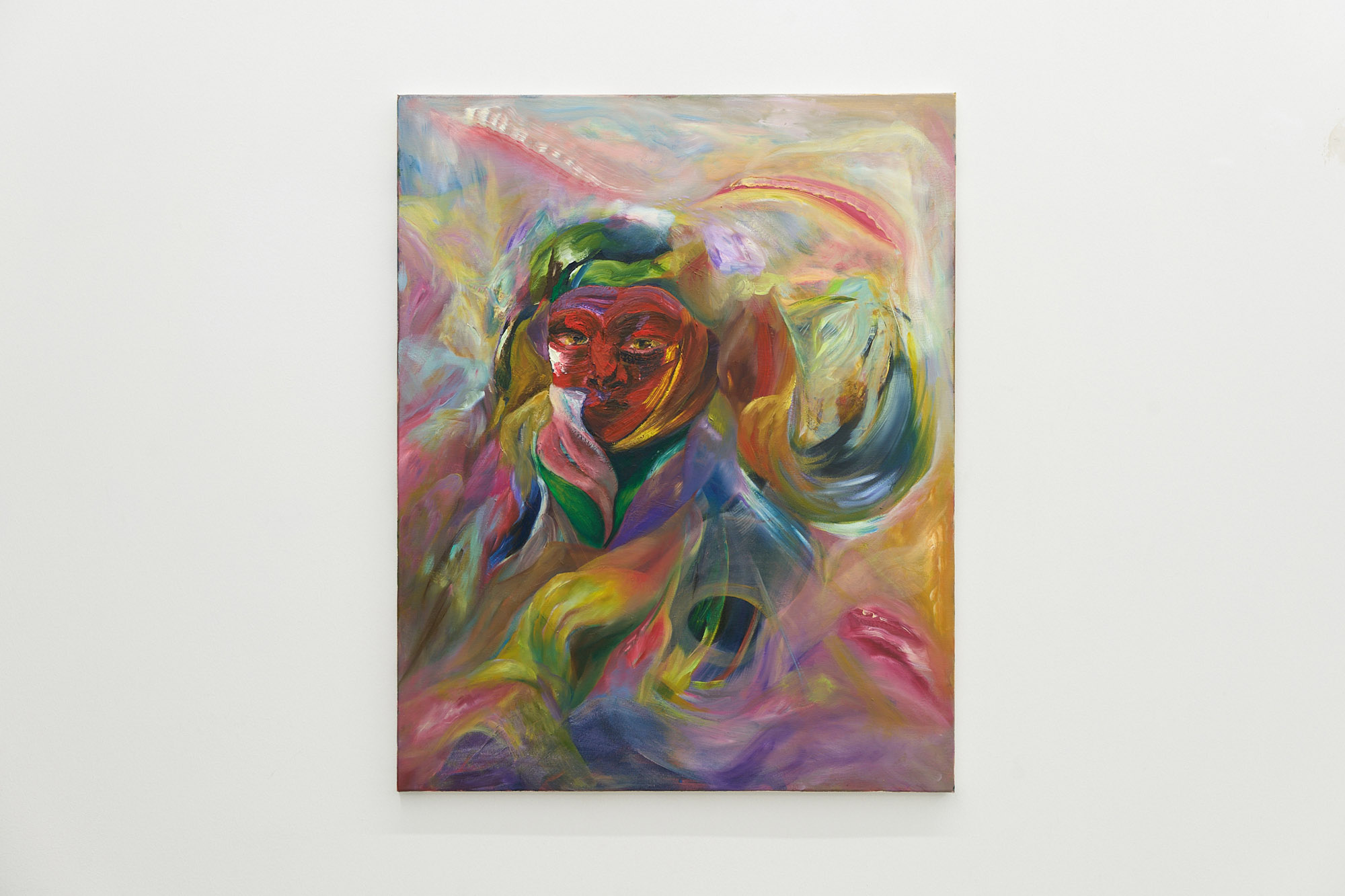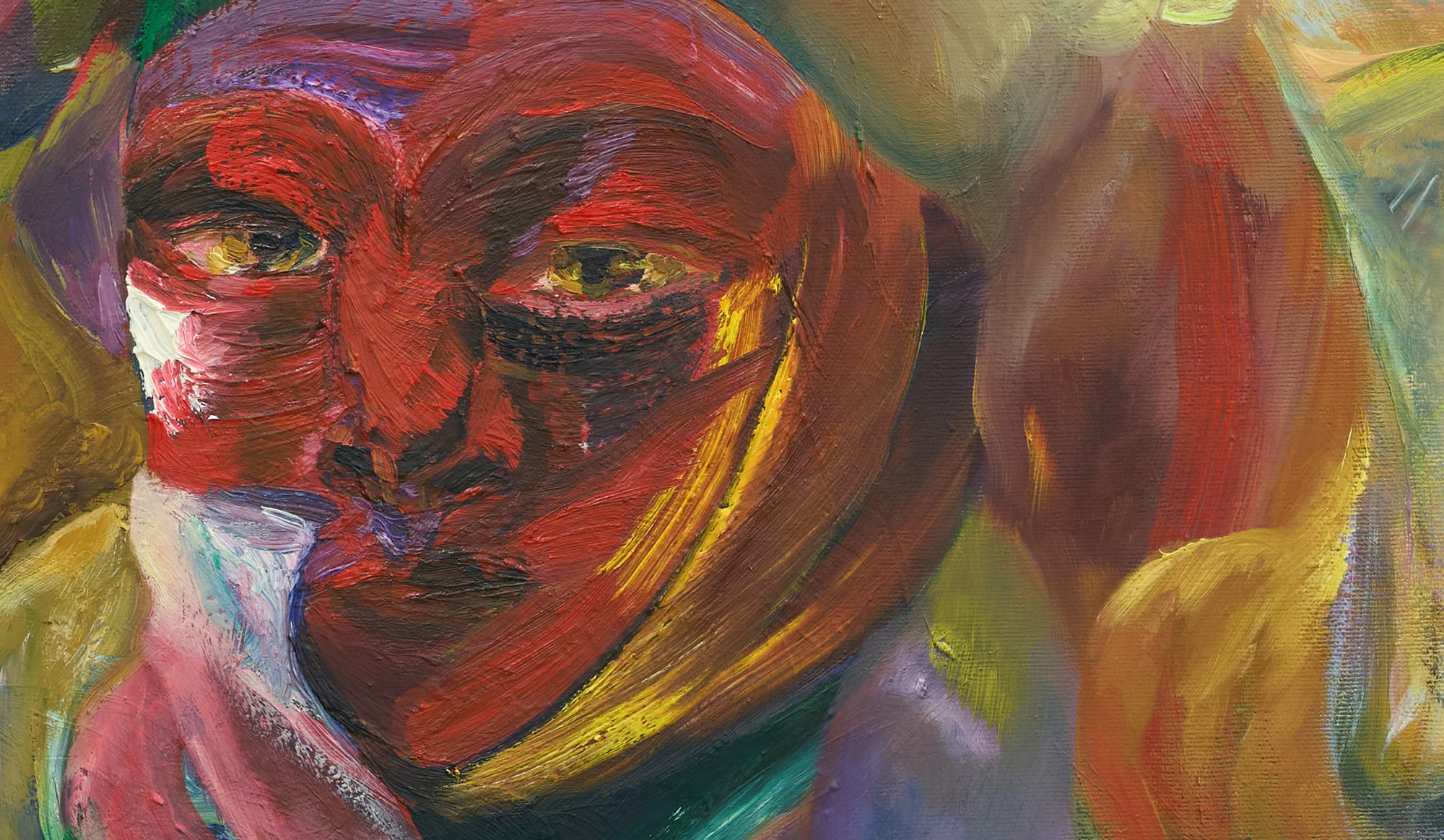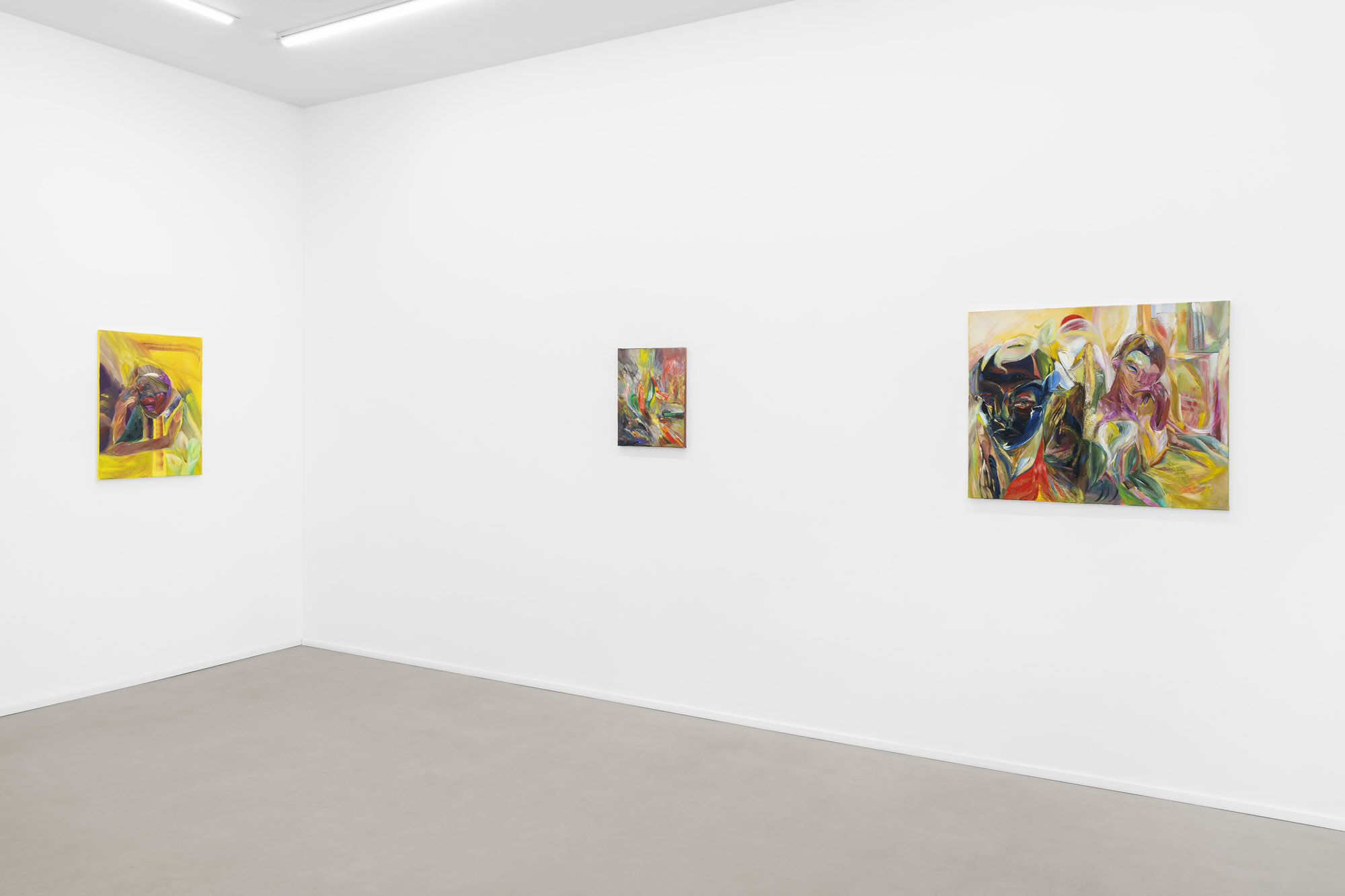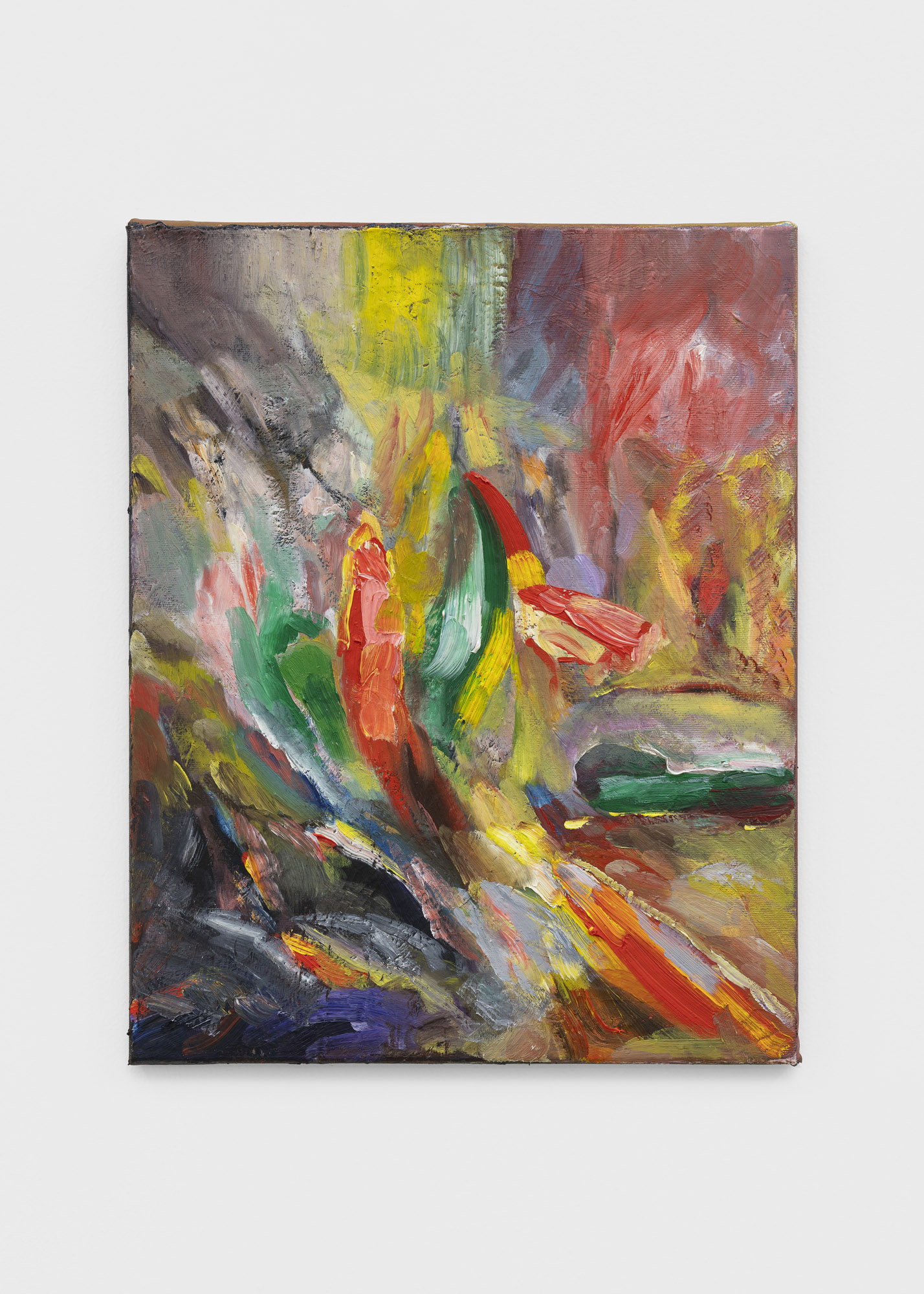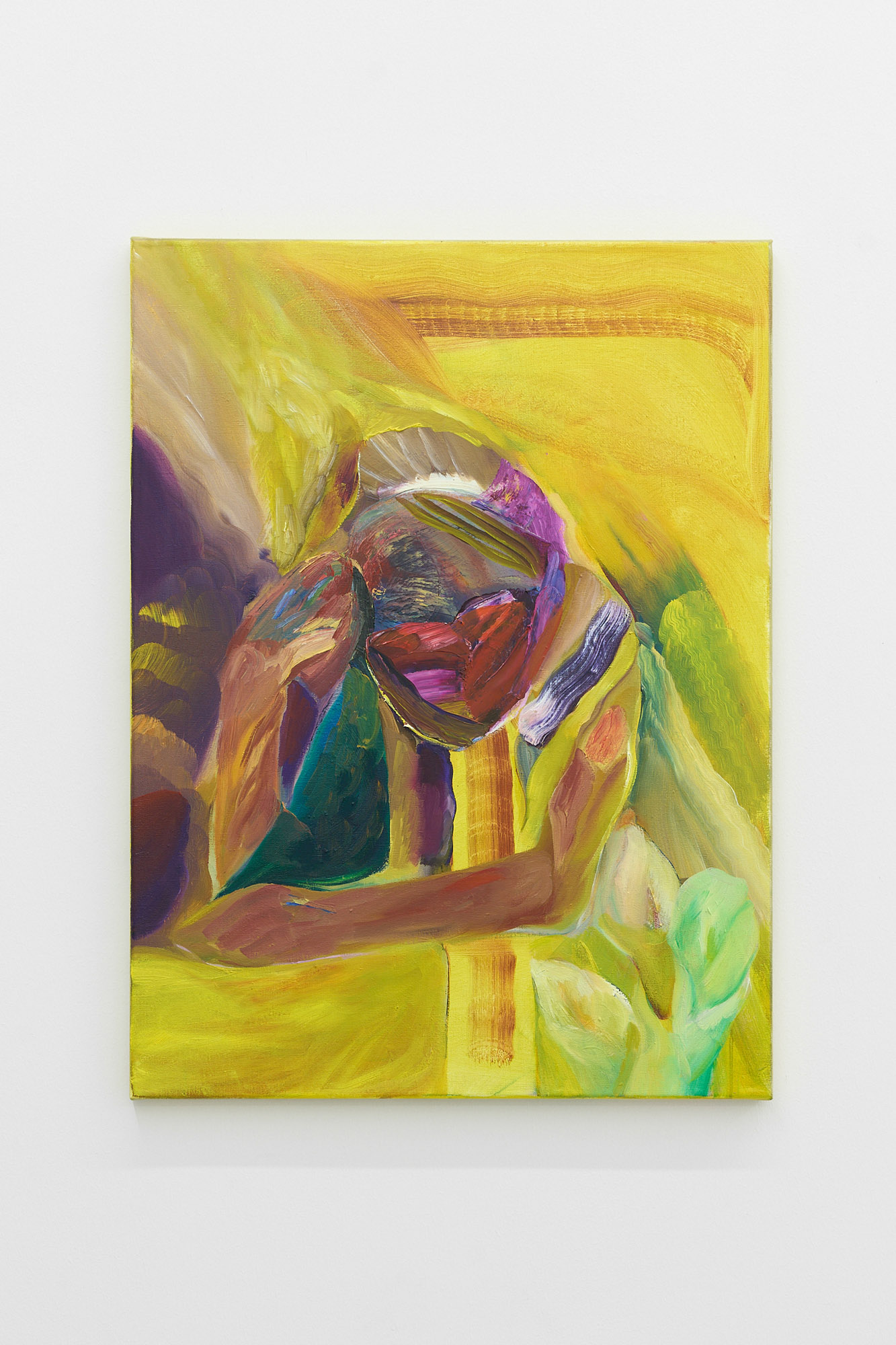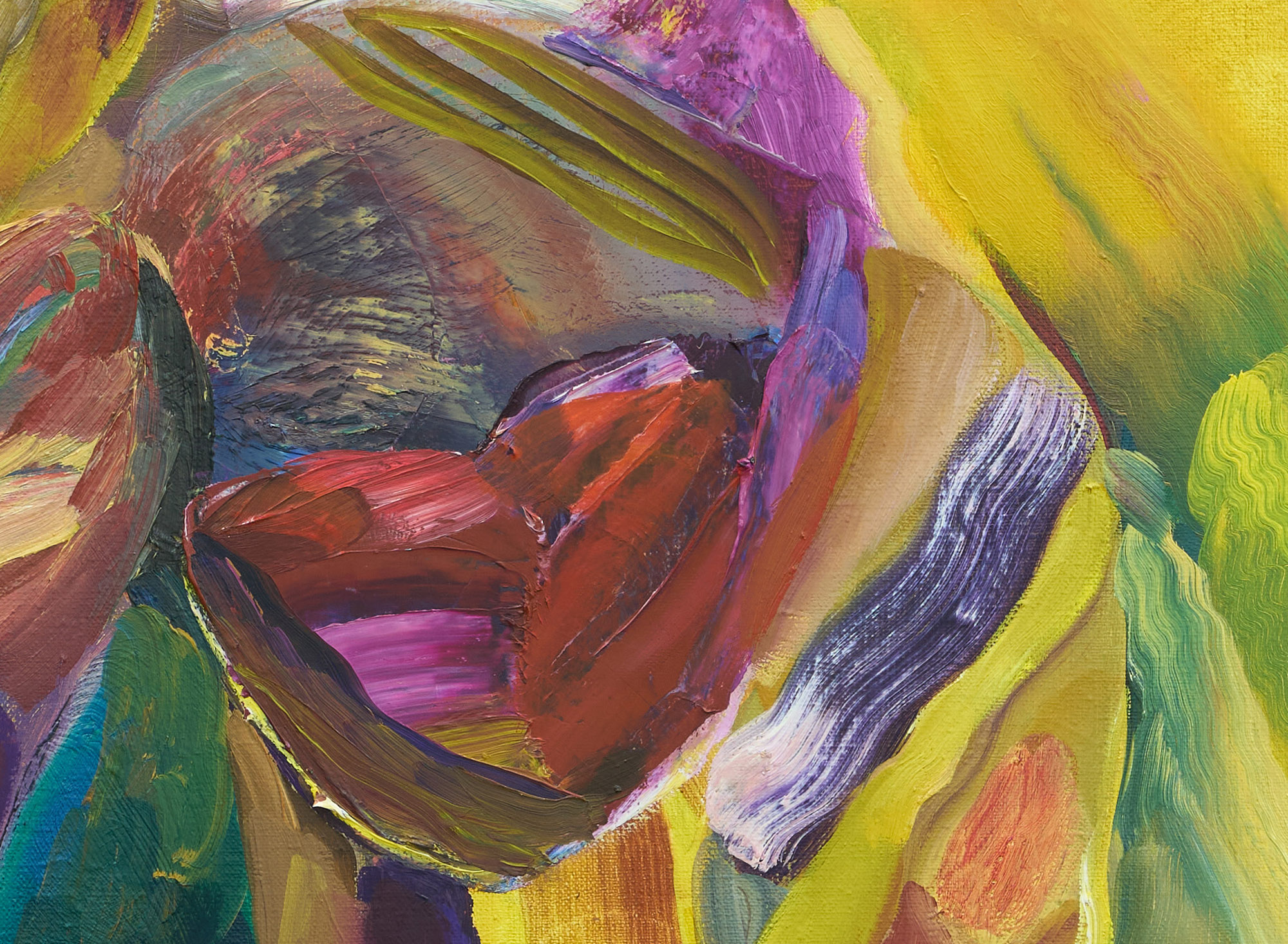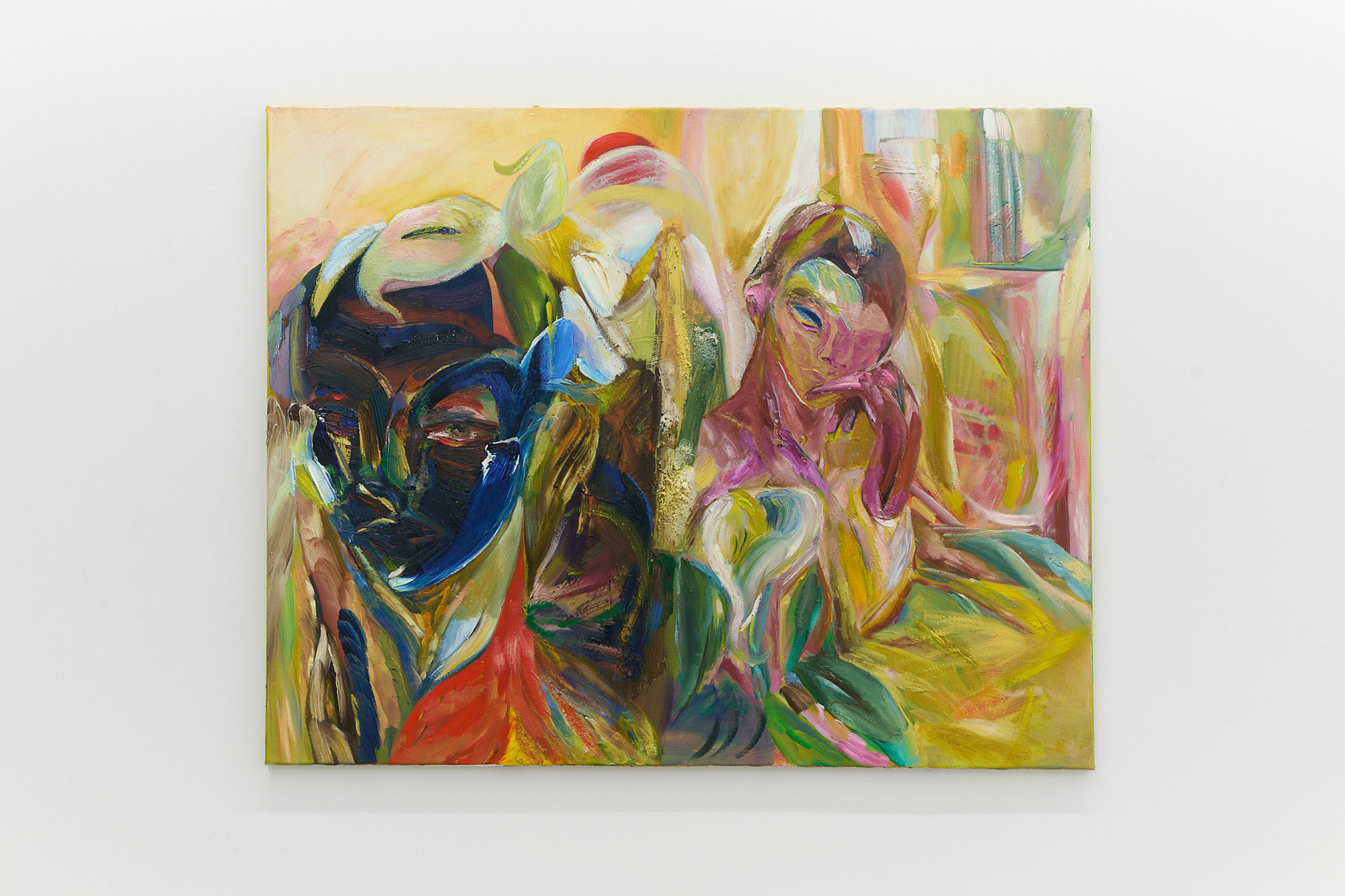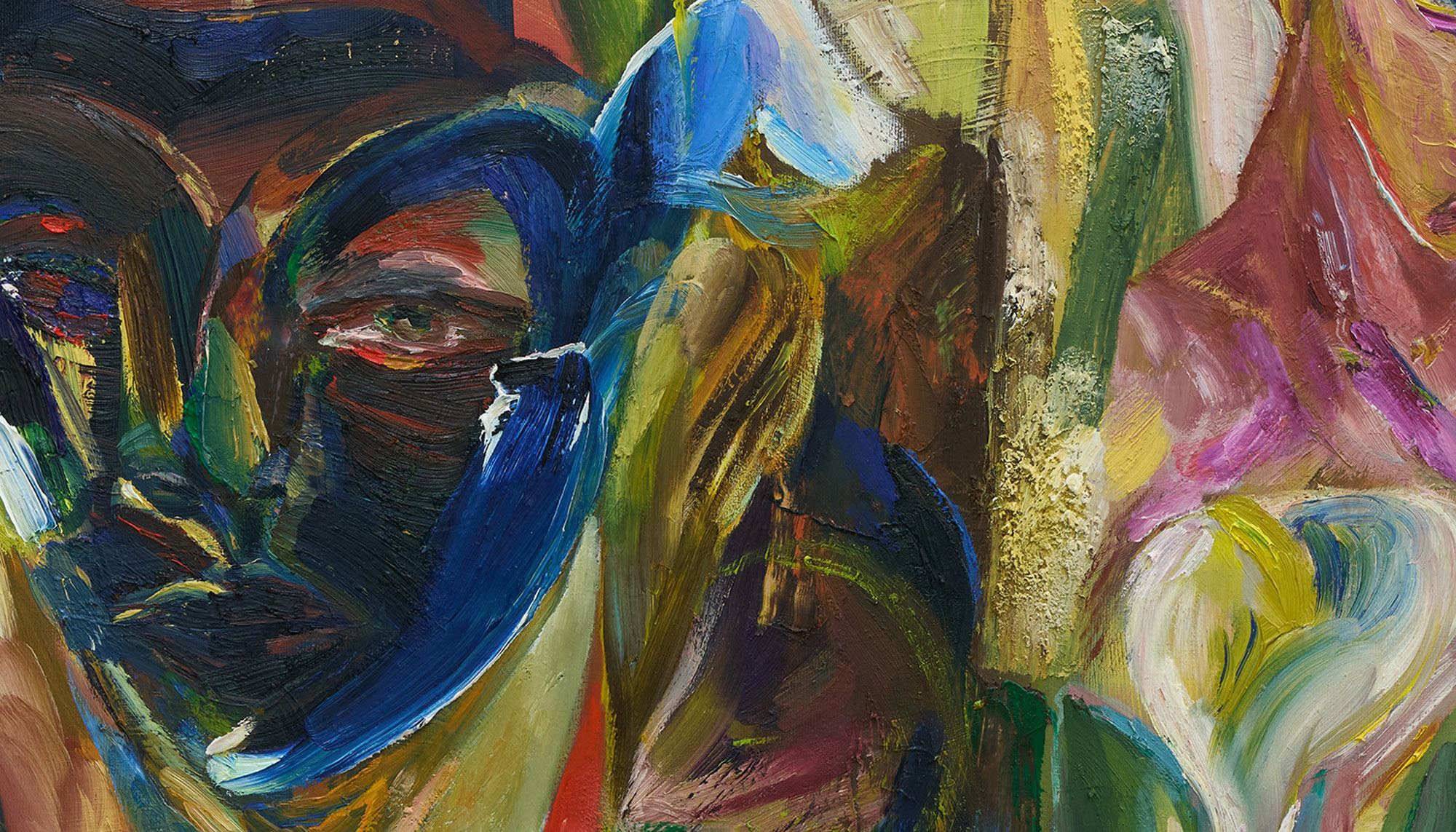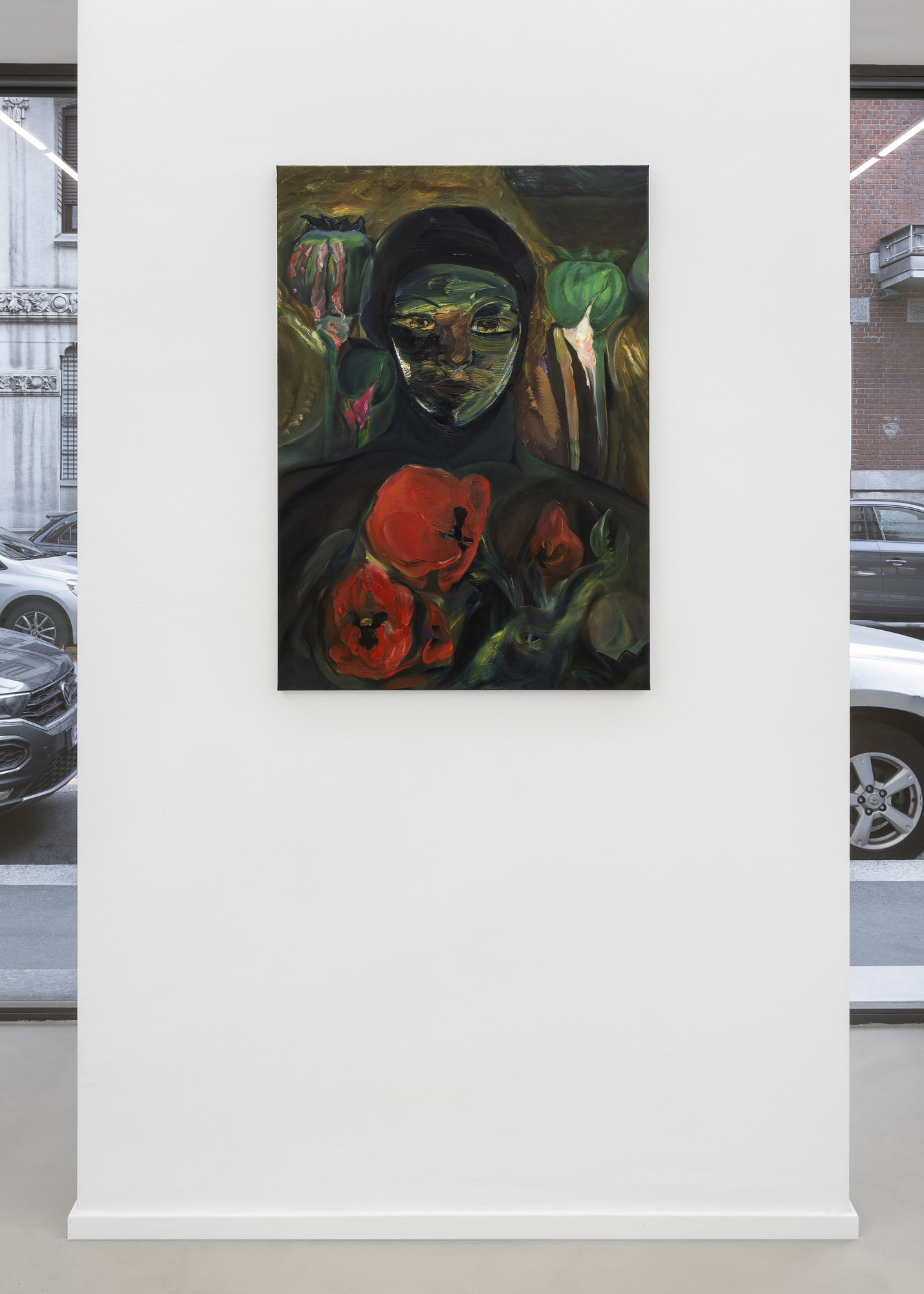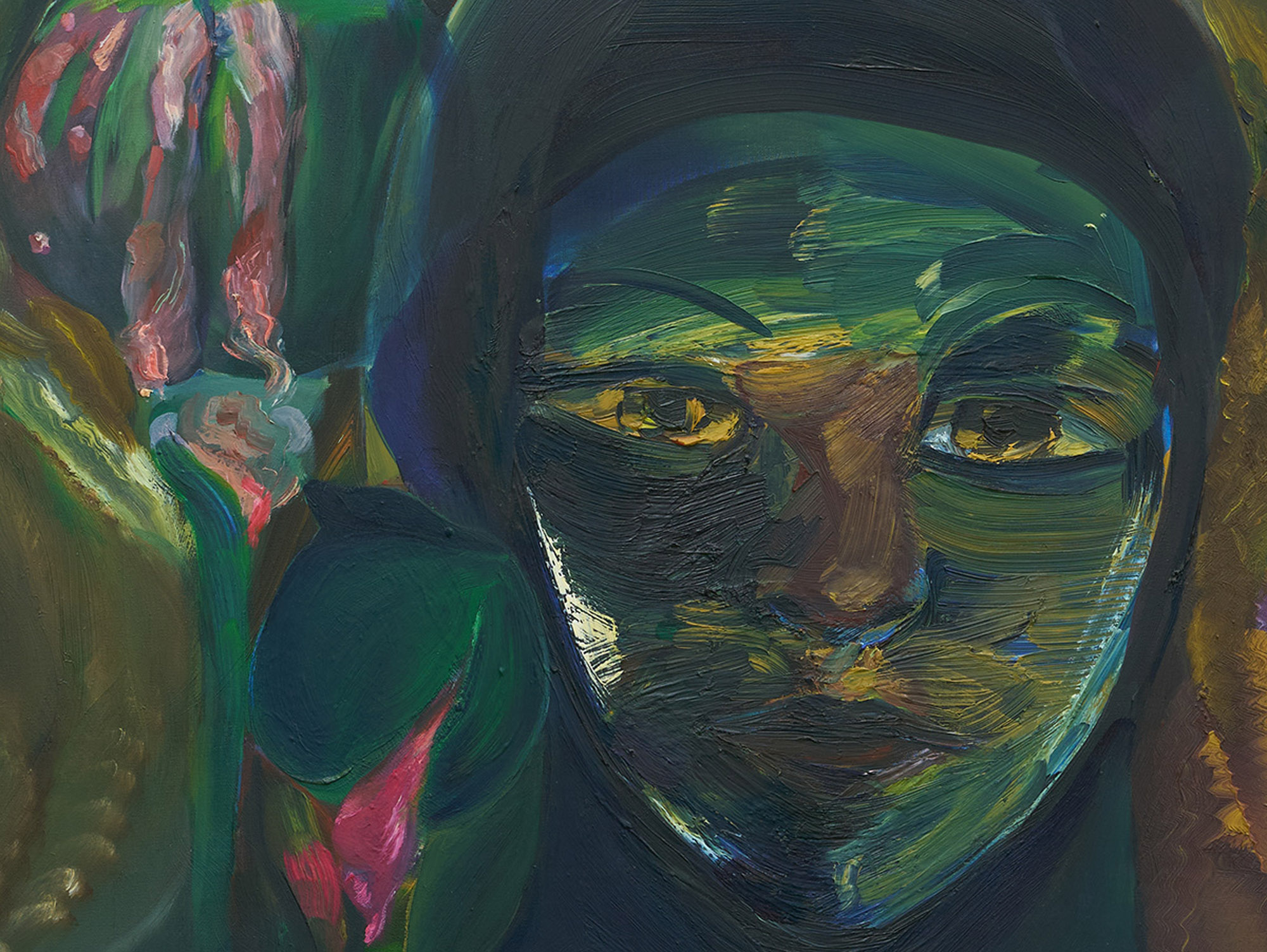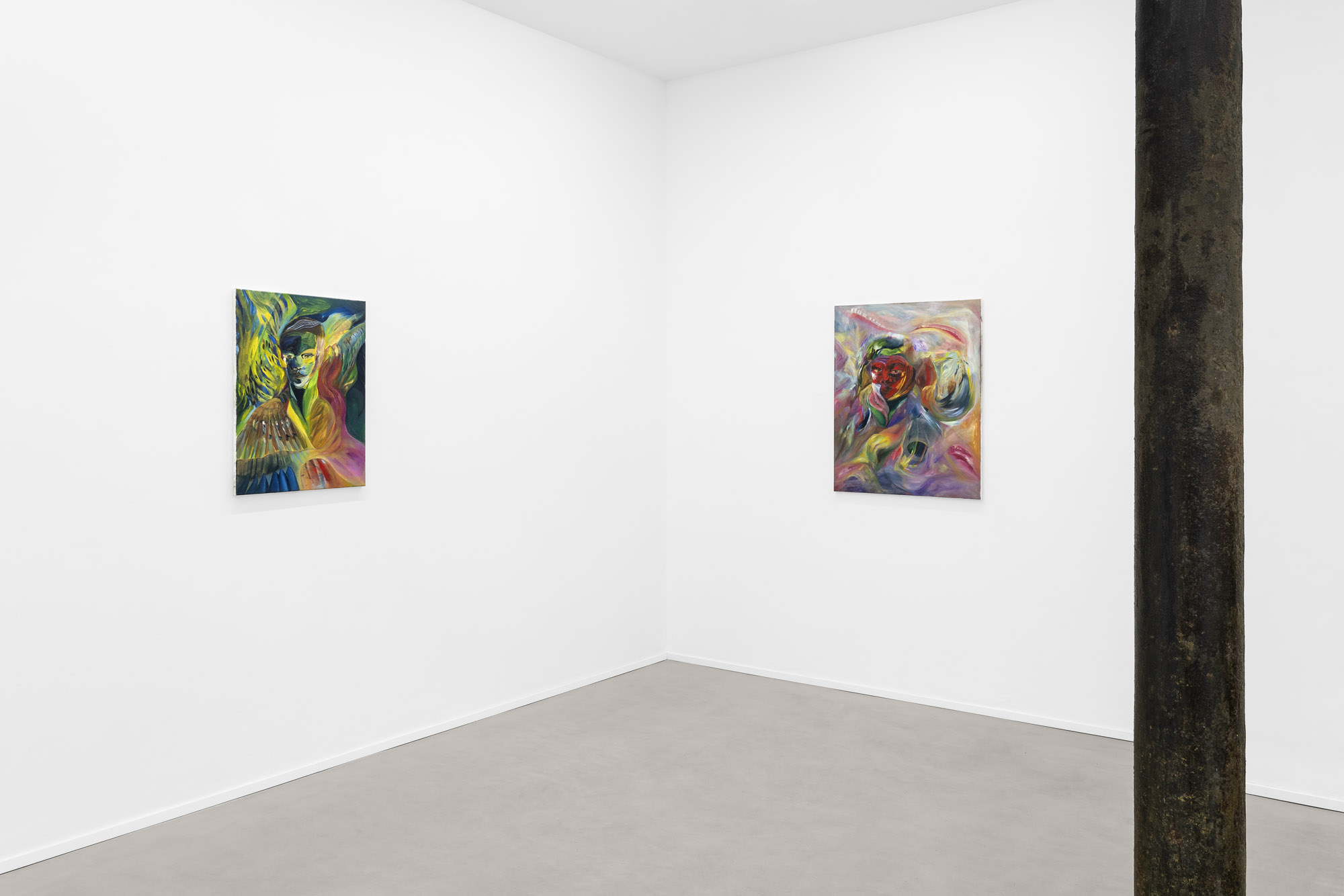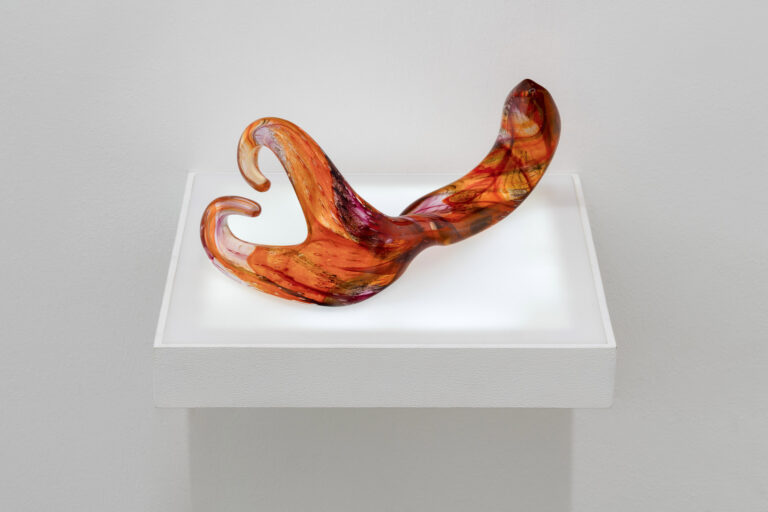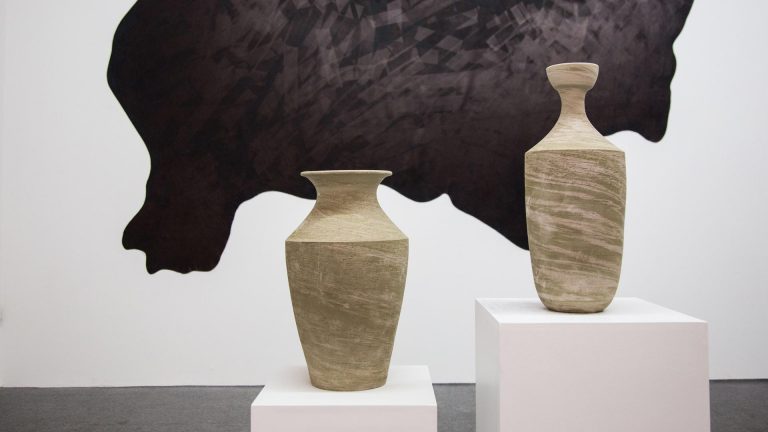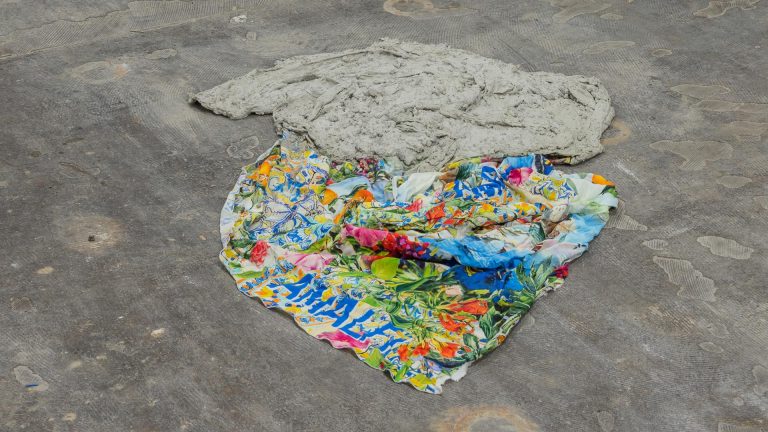Artist: Tamar Magradze
Exhibition title: Thick Skin
Venue: eastcontemporary, Milan, Italy
Date: April 23 – May 21, 2024
Photography: Tiziano Ercoli, Riccardo Giancola / all images copyright and courtesy of the artists and eastcontemporary, Milan
“Out of doors one becomes abstract and impersonal. One’s individuality absolutely leaves one. And then Nature is so indifferent, so unappreciative.”
Oscar Wilde, The Decay Of Lying.
eastcontemporary is pleased to present Thick Skin, a solo exhibition by Tamar Magradze, a Berlin-based multimedia artist originating from Tbilisi. The exhibition showcases a selection of Magradze’s recent oil paintings, a medium in which she (re)discovered artistic solace later in practice independent of her primary working apparatus of moving image, nevertheless comparatively drawing back and borrowing from the new media background. As her screen-based oeuvre explores socioeconomic dealings across the range, be it the bureaucratic aspects of regulated migration schemes, meta-awareness of monetary systems, or lucid transience of time in routine labor, her peculiar arrangement of painterly mise-en-scène offers exposed rather than expressive, psychoanalytic portrayal of a subject faced with dialectic peril. The depression of spirits with no apparent cause, per the textbook definition of melancholy, is emitted in Magradze’s canvases far before deep-diving into their characteristic specificity, but in the artistic urgency to speak in portraiture, speak in landscape.
Painting a landscape is an inseparable process of orthodox painterly practice— every academic artist has to study it. However, it is only with anxiety and vexed emotions that a contemporary independent practitioner directs their scrutinizing eye to the utterly uncomfortable and the most unnatural for humankind—nature. Magradze deals with these two, although contrary, organic matters, the physical and metaphysical texture of a person and a landscape, with equal apprehension and coherent aesthetical decisions. Blurring, exaggerating, and zooming in and out of a landscape can be seen as a light-hearted visual play, but there is something particularly political, even controversial, in the same dose as with a portrait. If a portrait acquires a strongly political context through the argument ‘personal is political’ and the questions arising from it, the landscape’s potential to become a political tool is conditioned by the artist’s approach to it. Magradze’s concise execution of traditional genre is born from the cultivated blindness of nature’s onlooker, from a distance, thus the fog and the haze. Elements, neither utterly apocryphal nor documentary, trace the motifs of the presented work, stitching together antipodal realities and modes of being, modes of representation while remaining apathetic—intentionally. This purposive subjection to the irking aspects of transient existence serves as a prolific moment of rejuvenation and perseverance. The question arises of the presiding and the gravity (in the word’s both senses) of metamorphosis, not to speak of Kafkian cockroach, but a Baconian gesture of calling a hill; Is it a mountain turning into a face or the face cosmically augmenting into a mountain? Is it the calla lily that permeates the soil of the skin or the indoor space shedding its sheltering walls in the face of a plant blossoming? Through the perfected indifference, Magradze’s ambivalent characters escape anthropocentrism, as well as the incited animism. It is unequivocal that the weightlessness of hovering figures does not denote apparition properties but their anachronistic stillness, a lacuna in fallacious rewinding, and a slipperiness of cinematographic motion. In the idiosyncratic rendering of multiple planes, interplacing nature scapes and morphed creatures of human origin, the pictures, imbibed with heavy-handed brushstrokes, shape a scene unfolding through an accordion of layers instead of a single view frame.
Imperviousity, suggested by the exhibition title Thick Skin, offers an insight into the artist’s political interest in the marginal surface of a painting. The abandonment of barriers, be it the proscenium in theater or the unreflective museum glass over a museum-hung canvas painting, conventionally guarantees the invigoration of emotional engagement in an audience through interpersonal eye contact, but Tamar Magradze’s figures stare between the eyebrows at best. Vacant eyes and palpable stares, even in instances of the sensory organ’s erasure as in Yellow, suggest an abrupt volte-face in her painterly mise-en-scène, with their nose tips nearing an imagined glass barrier. Via the undercurrent psychological note of ‘slamming the doors in golden silence,’ a reference from Jacques Tati’s futuristic farce, these figures gazing interrogatively transcends the assumed rural archetype and shed contemporary civic light to the alien faces and ‘background’ landscapes abstracted to virtual projection in their materiality.
Tamar Magradze’s green-cast portraits drawing parallels with the style of 20th-century maverick painter Natela Iankoshvili, gone through the lens of artistic sincerity similar to Kirchner’s, oudes to the synthetic glow associated with screen-apt everyday life, and the integral companion of her new media practice; Artificial light oversaturating, and exhausting the skins of her introverted characters, becomes an accomplice in the artist’s annotative mark-making about the physical and the spiritual, or the lack of it at that. With the utilization of semi-negative, by dreaming the frontal objects, the artist flirts with the world, namely with the awkward nature. In the closed circuit of the creative’s objectivity, where the sentiment expressed in the portrait of a fictional figure in hyperbolized vegetation remains very personal, the personal becomes anthropological. The works start to serve as microcosms that release the genre’s peculiar capacity to return to impersonal, to liquefy before penetrating one’s folds.
-Gvantsa Jgushia
Tamar Magradze (born in 1988, Tbilisi, Georgia) lives and works in Berlin.
Tamar Magradze’s painting does not often speak of a reality directly. On the contrary, most of the characters in her work are imaginary creations, avatars of a collective memory. These often female or androgynous figures residing on the surface of a canvas, do not belong to any concrete geography or moment in time. Rather, personifications of various truths and myths, they float between many different times and spaces. Tamar Magradze studied at the Tbilisi State Academy of Arts in 2011 and moved to Berlin to continue her education the following year. In 2018 she received MFA from the Berlin University of Arts (UDK), department of Experimental Film and New Media Art. Her work has been shown internationally including E.A. Shared Space in Tbilisi, Efremidis Gallery in Berlin and Seoul.

